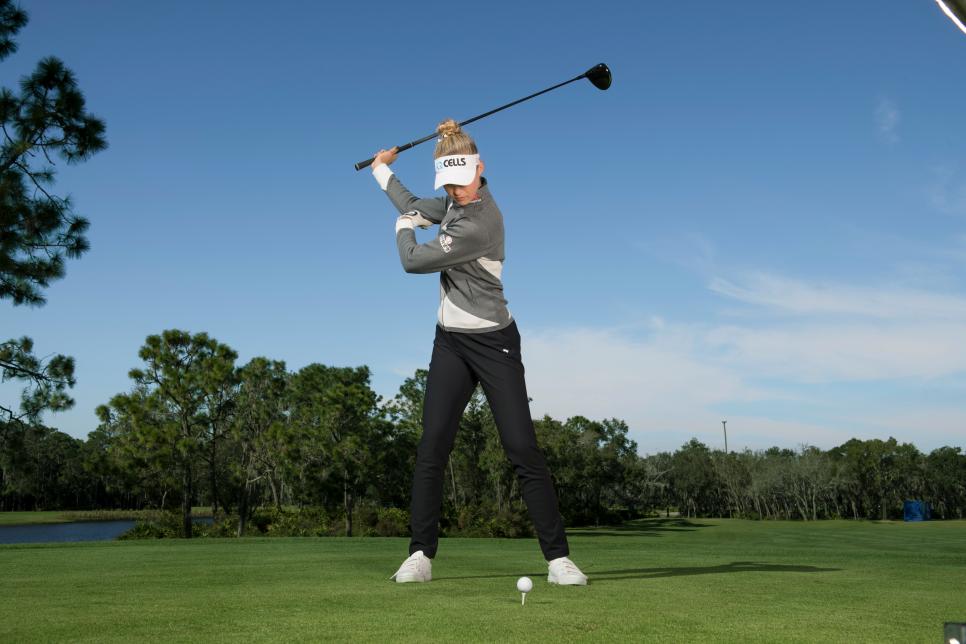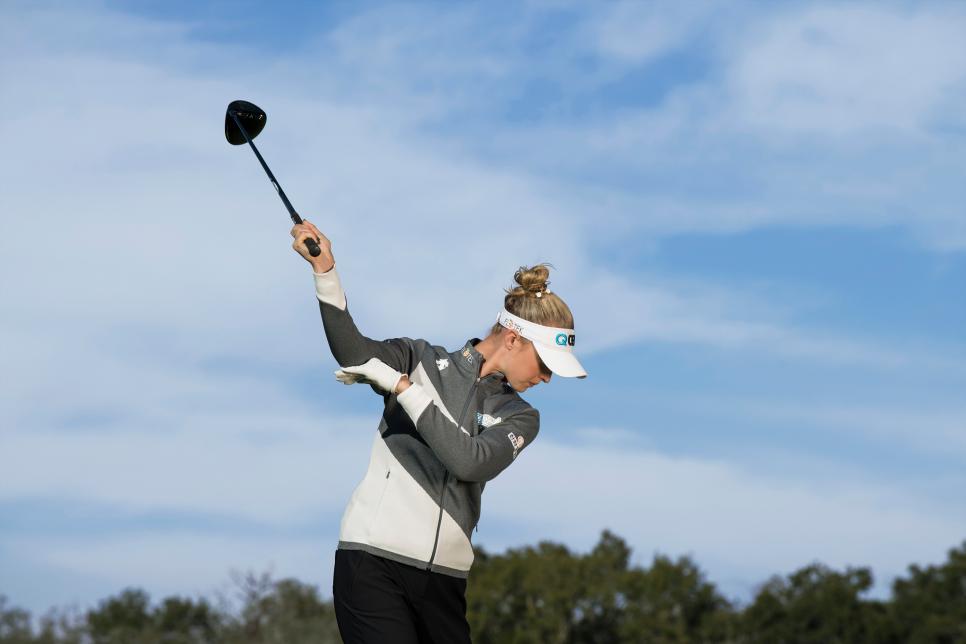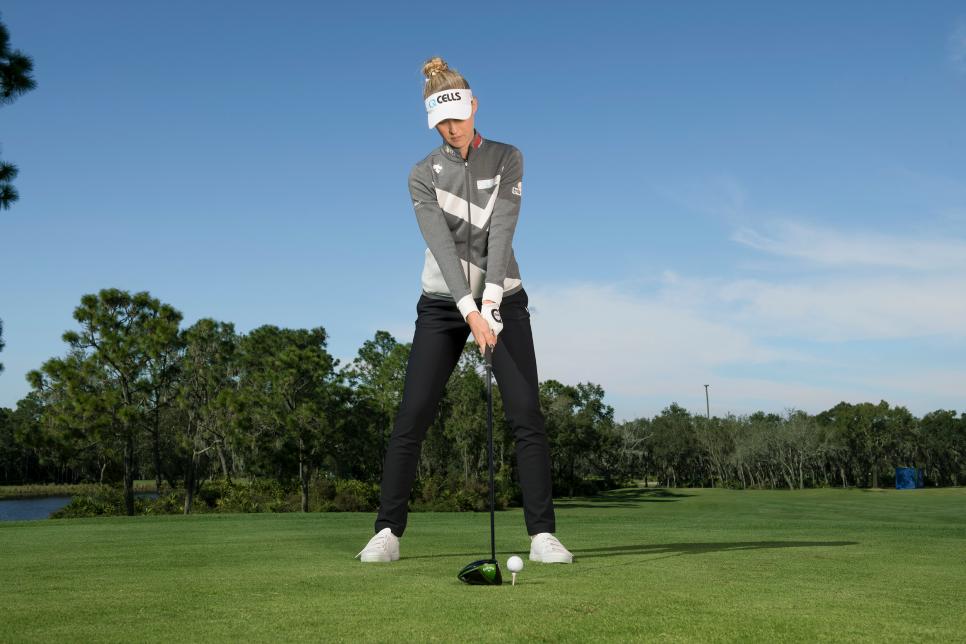Instruction
Nelly Korda shares the three drives you need to know how to hit

Photo by Dom Furore
The view from every tee box is different, so when you've got a driver in your hands, it's useful to know how to play more than one type of shot. Good news: You don't have to be a pro to hit a variety of them. When I won the KPMG Women's PGA at Atlanta Athletic Club in June 2021, I needed some tee shots I could rely on when I needed to hit a fairway—and then other shots when I really needed to hit one out there. I'll teach you how to hit my three go-to tee balls, starting with the one you're probably most interested in: the power shot. To pick up some extra yardage with your driver, you don't have to swing harder than usual. Instead, address the ball with more weight on your back foot, about 70 percent (above). It creates a more solid base, so you can maintain balance and increase the chance of hitting the ball in the sweet spot. This stance also will help you catch the ball on the upswing provided you play it far enough forward. If you hit up on the ball, you'll launch your drives higher with less backspin, and that creates more distance. I like the visual of the ball being at least somewhere near my left heel. It promotes good extension for longer drives and makes me feel like I can really smash it. Read on for my other two tee shots. --with Keely Levins
AN ON-PLANE SWING WILL IMPROVE YOUR ACCURACY

Photo by Dom Furore
You're probably wondering what I'm doing here (above). This is my one-handed drill to help me get a feel for the type of swing I need to make when I can't afford to miss the fairway. I actually use it as part of my pre-shot routine. I'll explain how to do it in a moment but first, always remember to check your alignment before you tee off. I'm talking everything: feet, hips, shoulders, clubface, etc. Give yourself the best chance to hit the fairway before you ever take the club back by making sure you're not lined up in a way that will put the ball in the rough. It's a forgotten fundamental on the amateur level, but we're constantly checking it on tour.
Now it's time for the one-handed drill. To do it, take your grip with your right hand only (if you're a righty) while bracing the top of your left-hand fingers under your right elbow. Keeping your left arm bent at a 90-degree angle, make one-handed rehearsal swings. Go to the top of your backswing, and then swing down a little past where the ball would be. You'll probably have to do this a few times until you really get a good feel for the plane your arms are swinging on.
I see a lot of amateurs looping the club up and around on multiple planes, and it's a big reason they can't find the fairway when they need to. Why? It makes it a lot harder to deliver a square clubface into the ball. Sometimes they can get away with it, but it's not reliable. That's why I like to do this drill before I take the club back. It helps me feel how the arms should move the club during a good on-plane swing. If you can stay on plane going back and down, you'll give yourself the best chance of a square clubface at impact.
IF YOU'RE GOING TO CURVE IT, YOU HAVE TO CONTROL IT

Photo by Dom Furore
If you're like almost every golfer I play with, you want to be able to hit a big, high draw off the tee. That's the shot for righties that starts a little right of the target but curves back toward it. It's a nice ball flight to look at, and it has a lot of utility if you can do it on command. It's my stock shot on tour.
There are a lot of ways to get the ball to draw, but it happens for only one reason: At impact, the clubface is open to the target but closed to the swing path. So the first thing you need to do is make sure your swing path comes from inside the target line on the downswing. If your clubface is closed to this path but open to the target when it meets the ball, you'll get that draw.
To help swing down from the inside, set up with the alignment of your shoulders pointing right of the target line while your hips and feet are still in line with it. Then swing along your shoulder line, and the ball should draw. One more note: Only tee the ball so about half of it is above the top of the driver. Any higher and you risk popping the ball up and losing distance.
I hope the tips for these three drives sound simple. Why would you want to make it any harder to hit them on command?
BIO
NELLY KORDA
AGE 23
LIVES Bradenton, Fla.
STORY Won her first major title at the KPMG Women's PGA at Atlanta Athletic Club in June 2021. Korda ascended to World No. 1 with the victory and held it longer than an American in history until reliquishing it in January 2022. In August 2021, she won the gold medal at the Tokyo Olympics. Korda qualified for the U.S. Women's Open at 14 and has been a budding star in golf, along with her sister, Jessica, ever since.